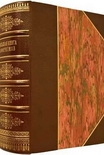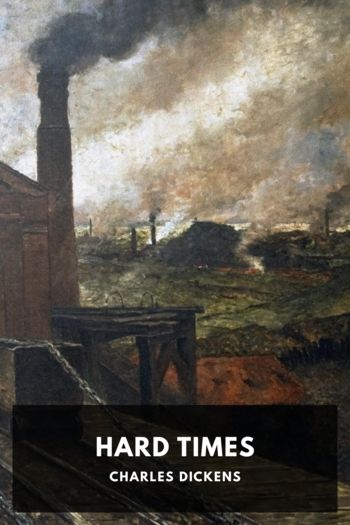Hitler's Terror Weapons Brooks, Geoffrey (bts books to read TXT) 📖

Book online «Hitler's Terror Weapons Brooks, Geoffrey (bts books to read TXT) 📖». Author Brooks, Geoffrey
In January 1942 it was agreed between Schumann, Leeb and Dr Vögler, President of the KW Foundation, that the latter organization would take over the research in harness with the Reich Research Council, an agency of the Ministry of Education and Science. Professor Esau, an anti-Bomb Nazi, was appointed its scientific head while the Education Minister, Bernhard Rust, would be its President.
The Army research team led by Dr Kurt Diebner was to retain a measure of independence under the restructuring and would continue to be subject to War Ministry control. As if to underline the insignificance which the Heereswaffenamt now attached to the uranium project, Professors von Weizsäcker and Harteck were served conscription papers that month for military service on the Russian Front and Heisenberg was obliged to exert all his influence to persuade Professor Schumann to rescind the orders and restore the two physicists to their reserved occupations.
More Odd Experiments by Heisenberg
Heisenberg himself was to continue with his intriguing experiments begun at Leipzig. At the end of 1940 the Heereswaffenamt had decided that uranium experiments were to use cast metal instead of uranium oxide powder. The Auer Company of Berlin had the contract for refining the uranium oxide confiscated at Oolen in Belgium, and a small plant had been set up at Oranienburg which turned out about a tonne of refined uranium oxide per month. The product was contaminated with boron, a neutron absorber, and therefore unsatisfactory. A quantity of uranium metal powder of good quality had been placed at Heisenberg’s disposal and he set to work on two small experiments: L-III, to investigate the scale of neutron losses in the outer shell and separating panels of the aluminium container, and a second to see the effect of fast neutrons sprayed directly into uranium metal powder. By coincidence, Professor Stetter, an SS-physicist with a special interest in plutonium as an explosive, submitted a paper announcing his own preparations for a similar experiment, but Heisenberg decided to forge ahead because the sphere he was using was larger.
Experiment L-II had shown a slight interim neutron multiplication prior to losses in the aluminium vessel. As all previous investigations had concentrated on fissioning U235 using slow neutrons, he had the idea of seeing what the effect would be of using unslowed neutrons on the U238 capture bands. He explained:
“The object of the experiment was to determine the neutron multiplication brought about solely by fissioning U235 with fast neutrons.”64
Within a square tin box a simple 15-cm diameter sphere was fitted which contained the uranium powder and 500 mgs of the radium-beryllium element at its centre. The outcome showed that U238 could not be used as of itself to produce energy. And if he wanted to know the fact, the experiment also demonstrated that fast neutrons had to be decelerated by a moderator such as heavy water before appreciable amounts would be captured by the U238 resonances for plutonium breeding purposes.
On 6 January 1942 at Berlin-Dahlem, with four helpers, he embarked on experiment B-III65. This was a repetition of the L-I uranium oxide/paraffin test examining the advantages of having uranium metal powder instead of the oxide. It had several additional goals: to test the effectiveness of the layer thicknesses as proposed by theory, and to establish to what degree the rare U235 in the material should be enriched to enable a working atomic pile to be built using ordinary water or paraffin instead of the heavy water moderator66, this being, as he knew, a very optimistic proposition.
The configuration was an aluminium sphere of 28.5-cm radius containing 551 kilos of uranium metal powder in nineteen concentric layers alternate with eighteen layers of paraffin stacked horizontally, the Präparat ball being placed at the centre. As with L-I there was no neutron multiplication and nor was any expected, for:
“The experimental assemblies containing paraffin as a moderator were not suitable for neutron multiplication. They were to measure important constants for later designs.”67
Measurement was made of the neutron distribution inside the sphere and in the ordinary water surrounding it. It was concluded that uranium metal powder was better than uranium oxide and
“confirmed other experiments in that when evaluating the neutron figure, account should be taken of neutron capture by U238 isotopes”.
In other words, experiments L-I and B-III with layered uranium and paraffin were concerned primarily with measuring the generation of neutrons and their capture by U238 isotopes, for on concluding an experiment the amount of U239 (which eventually decays into plutonium) forming in the uranium material was to be measured.
Speer Attempts to Resurrect the Official Project
On 7 February 1942 Dr Todt was killed when his personal Heinkel bomber crashed taking off in poor visibility at Rastenburg. Hitler decided to appoint Speer at once as successor to Todt. As has been mentioned, Speer was an enthusiast for the atom bomb, but soon found that the Völkischer Beobachter began to stir against him whenever he approached Hitler on the subject of atomic physics. The first convention of the Reich Research Council was held at its Berlin Steglitz HQ on 26 February 1942 under the chairmanship of Reich Minister Rust. Substantial funds became available to the project for the first time once Rust had become convinced that the heat reactor could definitely be built. In what must have been a speech glowing with optimism Heisenberg assured him not only that atomic reactors for energy production were “undoubtedly possible” but that an enormously powerful explosive could be bred in them.
In early May 1942 Speer arranged for Goering to be appointed head of a newly independent Reich





Comments (0)